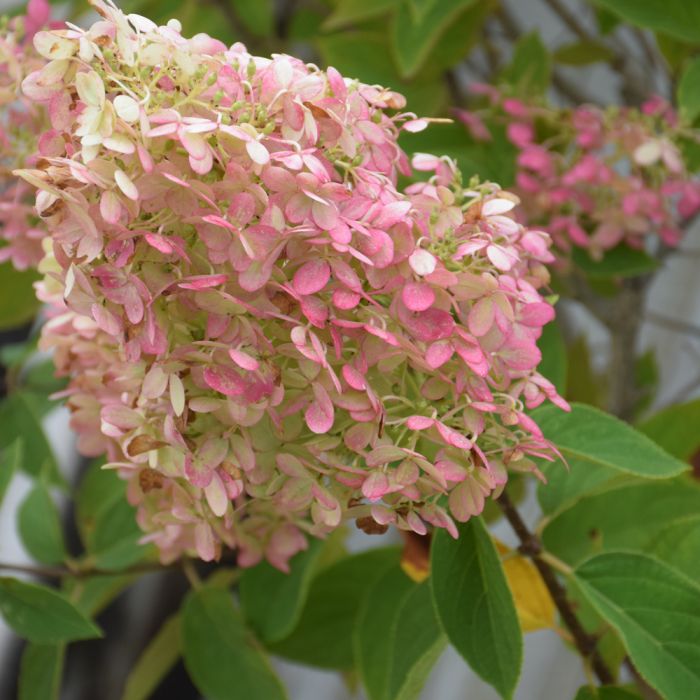Hydrangea, Panicle 'Limelight'





- Sun Preference
- Full-Sun, No-Sun
- Bloom Time
- June, July, August, September, October
Description
A selection that produces exquisite, bright lime green flowers midsummer. Excellent vigor and strong blooming, blooms change color in autumn to a rich deep pink.
Minnesota's Largest Selection of Shrubs
Elevate your landscaping with Gertens' unmatched variety of shrubs! Selecting the right shrubs for your backyard can enhance its beauty and functionality. Consider factors like sunlight, soil type, and mature size when choosing shrubs. For sunny areas, flowering shrubs like roses or hydrangeas can add color and charm. In shady spots, opt for shrubs like azaleas or hostas. Evergreen shrubs provide year-round interest and privacy, while deciduous shrubs offer seasonal color changes. At Gertens, we offer a wide selection of shrubs to suit every backyard need.
Details
Limelight Hydrangea | Hydrangea paniculata 'Limelight'
Height: 8 feet
Spread: 7 feet
Sunlight: full sun to full shade
Hardiness Zone: 4a
Brand: Gertens
Description:
Simply a stunning development in the world of hydrangeas, this new variety features enormous, dense upright panicles of flower heads that start out a soft lime green; fading over the summer to white and finally brown in fall, one of the hardier selections
Ornamental Features
Limelight Hydrangea features bold conical lime green flowers with white overtones at the ends of the branches from mid summer to late fall. The flowers are excellent for cutting. It has green deciduous foliage. The pointy leaves do not develop any appreciable fall color.
Landscape Attributes
Limelight Hydrangea is a multi-stemmed deciduous shrub with an upright spreading habit of growth. Its relatively coarse texture can be used to stand it apart from other landscape plants with finer foliage.
This is a high maintenance shrub that will require regular care and upkeep, and is best pruned in late winter once the threat of extreme cold has passed. It has no significant negative characteristics.
Limelight Hydrangea is recommended for the following landscape applications;
- Accent
- Mass Planting
- General Garden Use
Planting & Growing
Limelight Hydrangea will grow to be about 8 feet tall at maturity, with a spread of 7 feet. It tends to be a little leggy, with a typical clearance of 2 feet from the ground, and is suitable for planting under power lines. It grows at a medium rate, and under ideal conditions can be expected to live for 40 years or more.
This shrub performs well in both full sun and full shade. It prefers to grow in average to moist conditions, and shouldn't be allowed to dry out. It is not particular as to soil type or pH. It is highly tolerant of urban pollution and will even thrive in inner city environments. Consider applying a thick mulch around the root zone in winter to protect it in exposed locations or colder microclimates. This is a selected variety of a species not originally from North America.
More Information
| Weight | 1.000000 |
|---|---|
| Gerten Grown Plants | Gerten Grown Plants |
| Available for Pre-Order | Yes |
| Bloom Time | June, July, August, September, October |
| Sun Preference | Full-Sun, No-Sun |
| Mature Height (Range) | 5 - 10 feet |
| USDA Hardiness Zone | 3, 4, 5, 6, 7, 8 |
| Common Family Name | Hydrangea |


